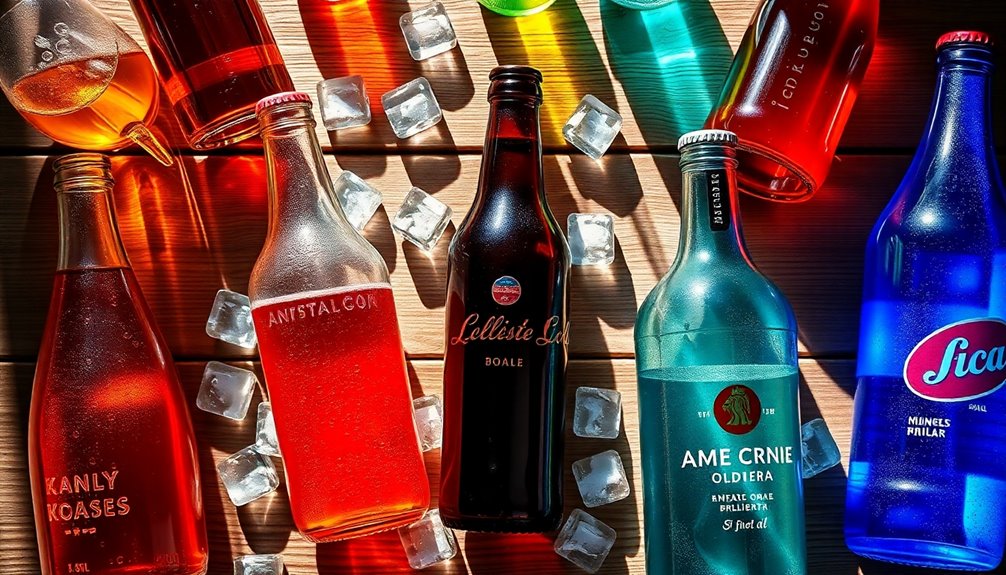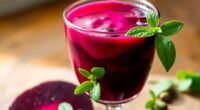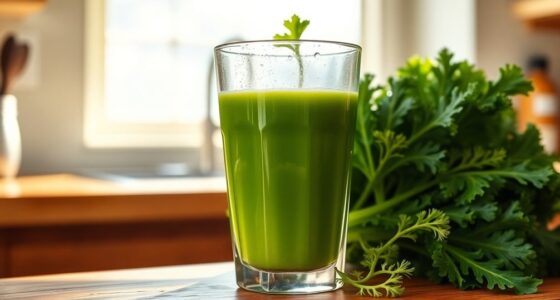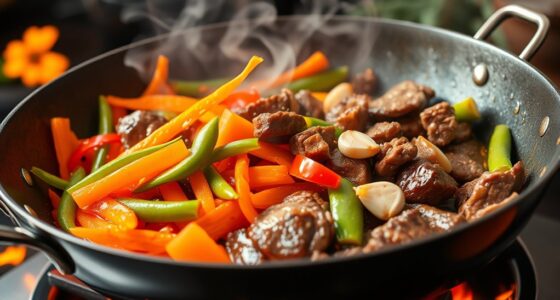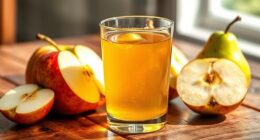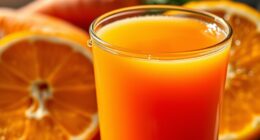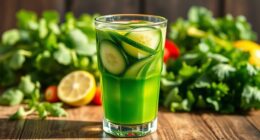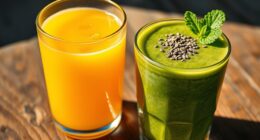You won't believe how beer preferences have shifted! Modelo has climbed to the top, surpassing Bud Light amidst changing consumer tastes. The rise of the Hispanic population is driving a demand for premium beers, and young drinkers are enthusiastic for unique flavors. Meanwhile, Bud Light's controversial marketing led to a sharp decline in sales. These dynamics illustrate a significant transformation in America's beverage landscape. Stay tuned to uncover more insights into these surprising trends and brand performances!
Key Takeaways
- Modelo Especial's rise to the top spot in U.S. beer sales reflects changing consumer preferences towards premium imports, particularly among younger drinkers.
- Bud Light's significant decline highlights the impact of misaligned marketing strategies and the importance of understanding consumer sentiment.
- The growing Hispanic population in the U.S. is reshaping beverage choices, favoring brands like Modelo over traditional domestic beers.
- Social media plays a crucial role in influencing consumer preferences, with brands leveraging influencer partnerships to enhance visibility and engagement.
- Premiumization trends indicate a shift towards higher-quality beverages, with consumers increasingly prioritizing unique flavors and sustainable practices.
The Rise of Modelo: A New King of Beer
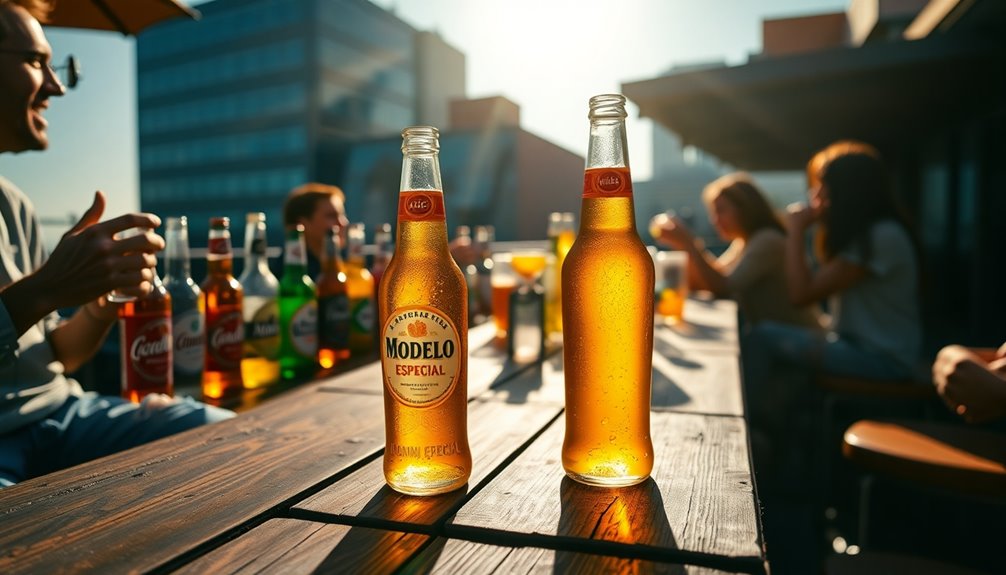
As consumer preferences shift, Modelo Especial has emerged as the new king of beer in the U.S. market. Surpassing Bud Light in sales during May and June 2023, Modelo showcases a remarkable growth trajectory driven by an increasing demand for imported beers.
You'll find that roughly 70% of its consumer base consists of the expanding Hispanic population, a trend that's greatly influenced its rise. From seventh place in 2018, Modelo climbed to the top spot this year, thanks to strategic marketing by Constellation Brands.
Their focus on premium positioning and active lifestyle branding resonates with young drinkers enthusiastic to explore new options. With its fresh appeal, Modelo is redefining beer preferences across the country.
Bud Light's Downfall: A Cautionary Tale
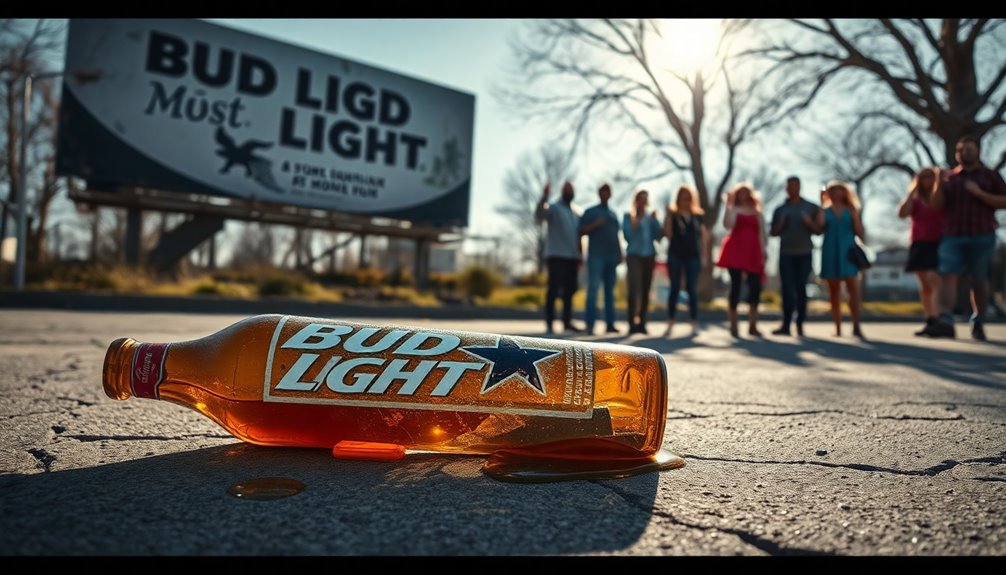
You've probably noticed Bud Light's significant struggles in recent years.
Their marketing choices, particularly the controversial partnership with a transgender influencer, have led to sharp sales declines, allowing competitors like Miller Light and Coors Light to grab market share.
This downfall serves as a cautionary tale about how marketing missteps can quickly tarnish a brand's image and impact its bottom line.
Marketing Missteps Impact Sales
While many brands navigate the complexities of modern marketing, Bud Light's recent missteps have starkly illustrated how quickly a legacy brand can falter. The backlash over its controversial partnership with a transgender influencer has led to staggering sales declines.
This situation underscores the importance of aligning marketing strategies with consumer preferences.
Consider these factors:
- Sales plummeted in 2023, greatly impacting profits.
- Competitors like Miller Light and Coors Light are gaining ground.
- Modelo Especial has become the top-selling beer, reflecting changing consumer preferences.
These shifts reveal how critical it's for brands to adapt their marketing approaches to avoid losing market share and to maintain relevance in an evolving beverage landscape. Moreover, leveraging natural language processing can provide valuable insights into consumer sentiment and help brands tailor their marketing strategies effectively.
Competitor Gains Market Share
With Bud Light's recent struggles making headlines, competitors have seized the opportunity to gain market share and attract disillusioned consumers.
The brand's multi-year sales declines, worsened by backlash against its marketing decisions, have left a gap in the market. Competitors like Miller Light and Coors Light capitalized on Bud Light's weakened position, drawing in those seeking alternatives.
As younger drinkers shift their preferences, brands that resonate with them are thriving, while Bud Light's brand image suffers.
This shift isn't limited to domestic competitors; imported beers like Modelo are also on the rise, particularly among Hispanic consumers.
Bud Light's downfall serves as a cautionary tale about adapting to changing consumer landscapes.
Changing Demographics: The Impact on Beer Preferences
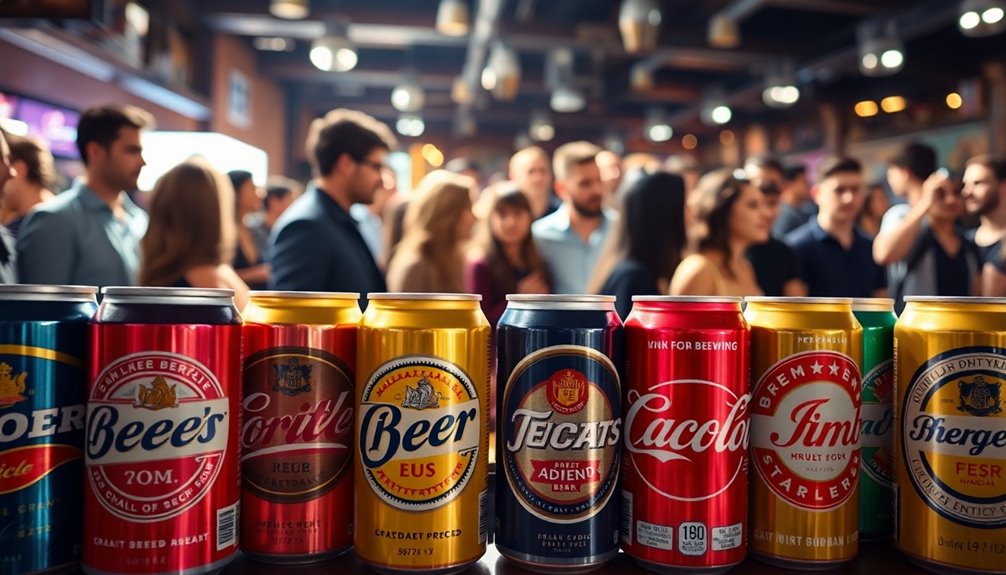
As the Hispanic population in the U.S. grows, it's reshaping beer preferences, with brands like Modelo seeing a surge in popularity.
You're likely noticing a trend where consumers are opting for premium imports over traditional domestic beers.
This shift highlights not just changing tastes but also the influence of diverse demographics on the beverage market.
Hispanic Population Growth
The growing Hispanic population in the U.S. is reshaping beer preferences, influencing both market trends and brand dynamics. As this demographic expands, so does the popularity of imported beers, particularly Modelo.
In fact, Modelo's appeal has shifted from 70% Hispanic consumers in 2019 to 45% non-Hispanic drinkers by 2023, reflecting a broader acceptance across diverse groups.
Key factors include:
- Doubling of Mexican beer imports from 2013 to 2022
- Effective marketing strategies targeting the Hispanic community
- Rising demand for high-quality imported beers among younger drinkers
This cultural connection and evolving preferences position brands like Modelo at the forefront, demonstrating the significant impact of the Hispanic population on the beer market landscape. Additionally, AI technologies are increasingly used in marketing to analyze consumer behavior and tailor campaigns effectively.
Shift to Premium Brands
Hispanic consumers are driving a significant shift in the beer market, particularly toward premium brands. This trend, known as premiumization, is evidenced by the rise of Modelo Especial, now the top-selling beer in the U.S.
You're likely noticing that more consumers are opting for higher-priced, quality options over traditional brands. In fact, about 70% of Modelo's consumers identified as Hispanic in 2019, with non-Hispanic drinkers now making up 45% of its customer base.
The doubling of Mexican beer imports from 2013 to 2022 shows changing consumer preferences, especially among younger drinkers seeking novelty.
Modelo's strategic marketing, including English-language ads and partnerships with events like UFC, effectively positions it as a premium choice in today's competitive market.
Premiumization: Why Consumers Are Choosing Higher-Quality Beers
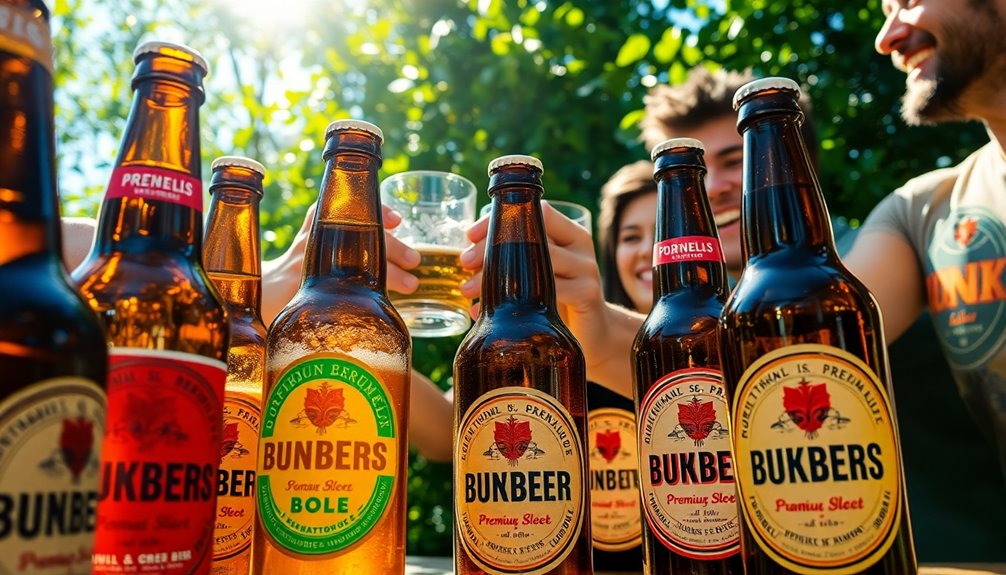
While many beer drinkers once settled for familiar brands, a noticeable shift toward premiumization now has consumers opting for higher-quality options.
You might be wondering why this trend is gaining momentum. Here are a few key reasons:
- Younger drinkers seek alternatives to legacy brands like Bud Light.
- Sales of Mexican beer imports, like Modelo, have doubled from 2013 to 2022.
- Consumers increasingly prioritize quality over cost, making higher-priced beers more appealing.
This change in consumer preferences highlights a desire for unique flavors and craftsmanship in brewing.
Brands like Modelo have successfully attracted a diverse customer base, proving that higher-quality beers aren't just a trend but a growing staple in the market.
The Role of Marketing in Shaping Brand Perception
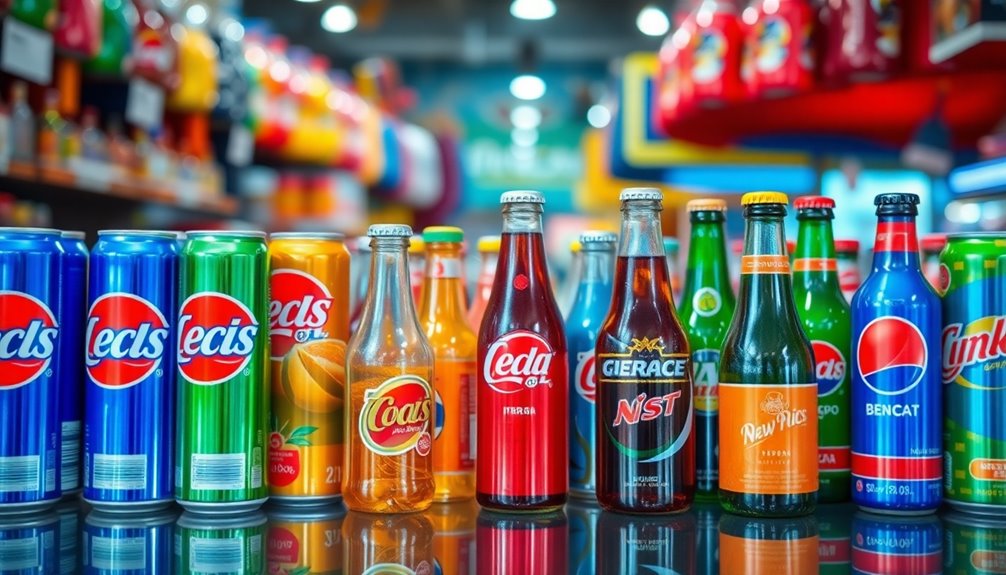
Marketing plays a vital role in shaping how you perceive beverage brands.
By creating emotional connections, leveraging influencer partnerships, and running targeted campaigns, brands can boost engagement and loyalty among consumers like you.
Understanding these strategies helps you see why some brands resonate more than others in today's competitive market. Additionally, high-quality content is crucial in establishing brand authority and trust among consumers, further influencing their purchasing decisions.
Emotional Connections Drive Loyalty
Brand loyalty thrives on emotional connections, and today's consumers crave authenticity and relevance. Effective marketing strategies that resonate with your audience can greatly enhance brand loyalty.
For example, Modelo's rise showcases how targeted campaigns foster emotional ties, especially through culturally relevant advertising.
Consider these key aspects:
- Storytelling: Brands that create compelling narratives attract wider audiences.
- Cultural Relevance: Aligning with consumer lifestyles makes products memorable.
- Innovative Engagement: Fresh, authentic experiences draw in younger drinkers.
Additionally, the importance of clean beauty trends reflects a growing consumer preference for products that align with their values.
Influencer Partnerships Enhance Visibility
As consumers increasingly seek authenticity and relatability, influencer partnerships have emerged as a powerful tool for beverage brands looking to enhance their visibility.
These collaborations allow brands to connect directly with younger demographics, leveraging influencers' credibility to drive consumer engagement.
Successful marketing strategies, like Modelo's sponsorship of UFC events, showcase how targeted approaches can elevate a brand's status and reach.
By shifting to English-language advertising, Modelo further strengthened its appeal, becoming the top-selling beer in the U.S.
However, brands like Bud Light demonstrate the risks; marketing controversies can severely damage consumer perception and sales.
Consistent branding and innovative influencer partnerships are essential for beverage companies to navigate today's competitive market and maintain relevance. Additionally, the importance of monitoring credit card statements can influence purchasing decisions and brand loyalty among consumers.
Targeted Campaigns Boost Engagement
- Cultivate brand loyalty through culturally relevant messaging.
- Increase market reach by appealing to diverse demographics.
- Position products as premium options that meet evolving consumer preferences.
- Understanding astrological compatibility can also influence how consumers perceive and connect with brands on a personal level.
In contrast, brands like Bud Light illustrate how misaligned marketing can hurt brand perception.
The Shift Towards Imported Beers: A Growing Trend
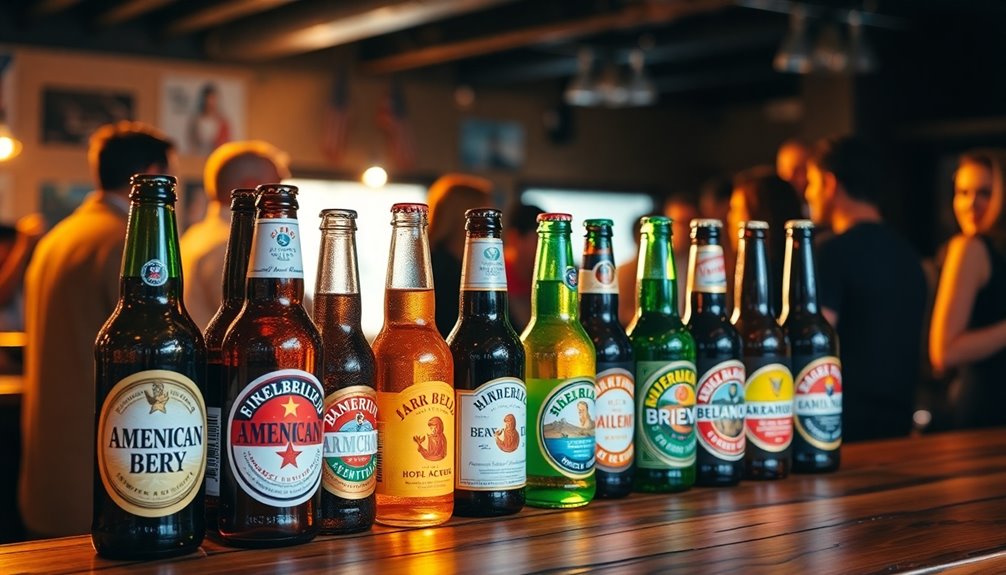
The shift towards imported beers has become a significant trend in the American beverage market, with demand for brands like Modelo doubling between 2013 and 2022. This surge reflects changing consumer preferences, as younger drinkers increasingly seek premium options.
Modelo Especial even surpassed Bud Light as the top-selling beer in the U.S. in mid-2023, showcasing its growing popularity. Remarkably, about 70% of Modelo's consumers identified as Hispanic in 2019, but now, non-Hispanic drinkers make up 45% of its customer base.
This broadening appeal indicates that imported beers are winning over a diverse audience. As the Hispanic population continues to influence the market, the trend towards imported brands like Modelo is likely to keep gaining momentum.
Constellation Brands: A Strategic Approach to Growth
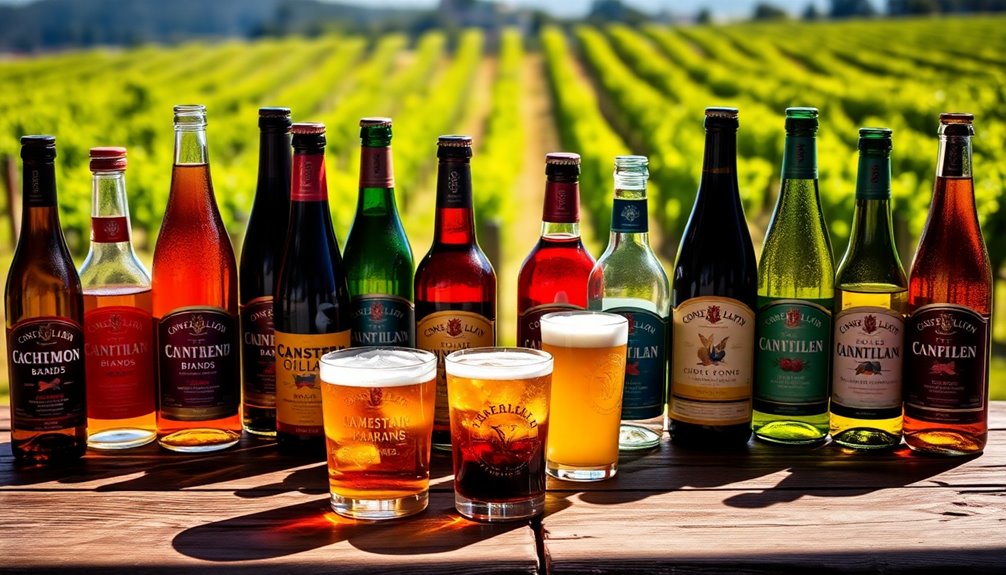
Constellation Brands has expertly navigated the complexities of the American beverage market, leveraging its acquisition of Modelo's U.S. distribution rights to craft a distinct growth strategy.
By marketing Modelo as a unique and premium beer option, Constellation has considerably increased its visibility since 2015. Their strategic partnerships, like those with UFC events, have positioned Modelo as a top choice among beer enthusiasts.
- Focus on the rising Hispanic population
- Consistent sales surges, moving from seventh to first place
- Targeted marketing for premium beer experiences
Under Constellation's leadership, Modelo's growth reflects a sharp understanding of market dynamics, ensuring it remains a favorite in the American beverage landscape. Their approach exemplifies the importance of thorough due diligence in identifying and capitalizing on market opportunities.
The Impact of Social Media on Beverage Choices
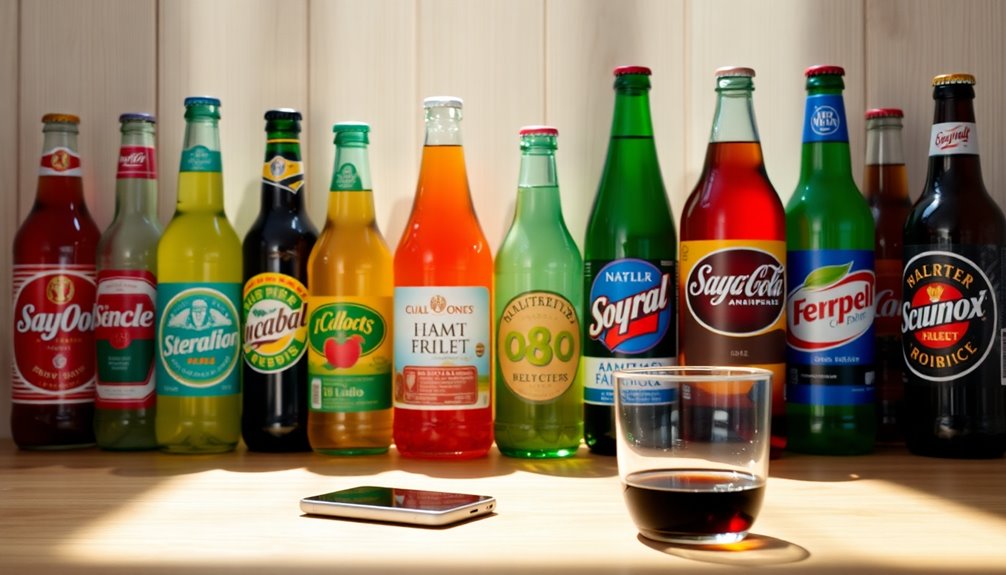
As beverage brands continue to adapt to changing market dynamics, social media has emerged as a powerful tool for influencing consumer choices.
You'll notice that many brands are leveraging influencer partnerships to boost their visibility among younger consumers. User-generated content on platforms like Instagram and TikTok greatly shapes your perceptions and preferences, often leading you to try trending beverages.
Brands that actively engage with you on social media tend to foster loyalty and advocacy, driving repeat purchases. Viral memes and challenges can quickly elevate a beverage's popularity.
Additionally, campaigns highlighting health and lifestyle benefits steer you toward premium and craft options, making your beverage choices more intentional and aligned with current trends.
Consumer Awareness: Ingredients and Health Concerns
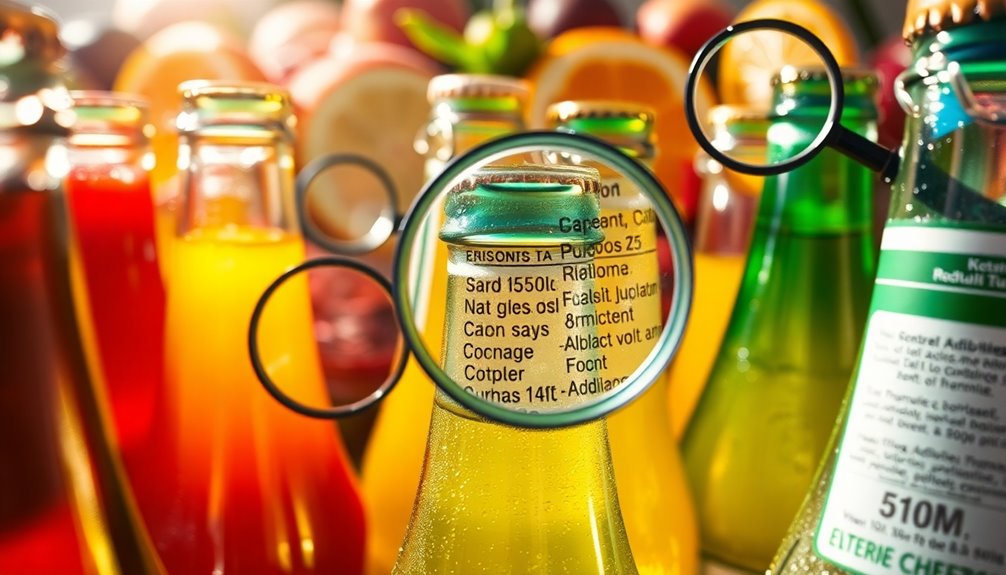
How aware are you of the ingredients in your favorite beverages? Many U.S. drinks contain additives that raise significant health concerns.
It's vital to be informed about what you're consuming.
Consider these points:
- Sodium benzoate may cause hyperactivity in children and could be carcinogenic when mixed with ascorbic acid.
- Trans fats, even in small amounts, increase your risk of heart disease.
- Many beverages contain GMOs, and long-term health effects remain unclear.
Consumer awareness is essential for understanding the potential risks associated with these ingredients.
By reading labels and staying informed, you can make healthier choices and advocate for better food safety regulations in the U.S.
Don't wait to prioritize your health!
The Future of the Beverage Industry: Trends to Watch
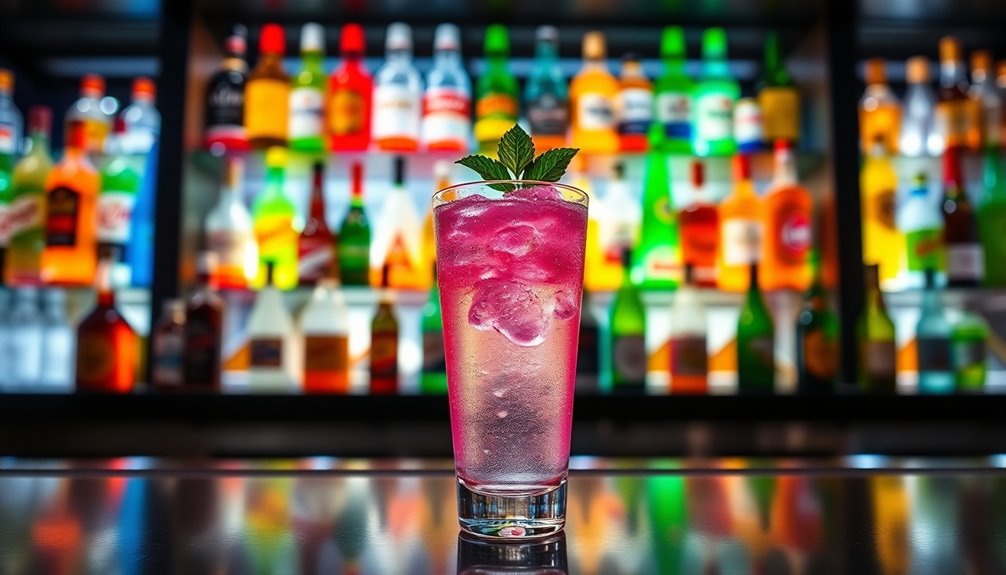
While the beverage industry continues to evolve, several key trends are shaping its future.
Premiumization is on the rise, with consumers willing to invest in higher-quality drinks like Modelo Especial.
You'll notice health-conscious trends influencing choices, as many people now prefer beverages with lower sugar and natural ingredients, prompting brands to reformulate their offerings.
Additionally, the growing Hispanic population in the U.S. is boosting sales for brands that cater to diverse tastes.
Canned beverages are gaining popularity due to their convenience, appealing particularly to younger drinkers.
Finally, sustainability is becoming essential; brands focusing on eco-friendly packaging and sourcing are attracting environmentally conscious consumers.
Embracing these trends will be important for brands aiming to thrive in this competitive landscape.
Frequently Asked Questions
What Is the Most Sold Drink in the USA?
The most sold drink in the USA is water, dominating beverage sales by a large margin.
It outpaces both carbonated and non-carbonated drinks, reflecting a shift towards healthier choices.
You might notice that soft drinks, especially Coca-Cola, still hold a strong position in the market.
Additionally, ready-to-drink coffee and tea options are gaining popularity, appealing to those looking for flavorful alternatives.
Water's accessibility and health benefits keep it in the top spot.
Who Won the Cola War?
In the arena of soft drinks, the battle between Coca-Cola and Pepsi symbolizes a clash between tradition and innovation.
While Coca-Cola often stands tall with its iconic Classic drink, Pepsi has diversified, appealing to modern tastes.
Ultimately, Coca-Cola has historically claimed victory in market share and brand recognition, but the war rages on as both brands adapt to changing consumer preferences.
You're witnessing a dynamic rivalry that shapes the beverage landscape.
What Is the #1 Beverage Being Consumed by Americans Today?
The #1 beverage being consumed by Americans today is water.
You're likely drinking over 65 gallons per year, making it an essential part of your daily routine.
Following water, coffee takes the second spot, with you and millions of others enjoying about 400 million cups daily.
While soft drinks are declining in popularity, healthier choices like flavored sparkling water and iced tea are gaining traction. As consumers become more health-conscious, they are increasingly turning to alternatives that offer flavor without the added sugars and calories found in soft drinks. This shift has sparked new discussions around hydration and wellness, particularly the juice cleanse vs detox water debate. Many people are exploring the benefits of each option, weighing the nutritional implications and overall effectiveness in promoting health and vitality. In addition to flavored sparkling water and iced tea, trends like drinking celery juice for health benefits have emerged as popular wellness options. Advocates claim that celery juice can aid in digestion, reduce inflammation, and provide essential vitamins and minerals. As more individuals explore these alternatives, the conversation around optimal hydration and nutrition continues to evolve, encouraging a broader range of choices that align with personal health goals.
What Was Removed From Dr Pepper Back in the 1950S?
Back in the 1950s, Dr Pepper removed prune juice from its recipe, which had contributed to its original flavor profile.
This decision aimed to appeal to a broader audience and streamline production.
Despite the change, Dr Pepper maintained its signature taste through a mix of other natural and artificial flavors.
Notably, this alteration didn't greatly impact the brand's popularity, as it continued to thrive in the competitive soft drink market.
Conclusion
In a world where your beverage choice could spark a revolution, it's clear the landscape is shifting faster than a cheetah on roller skates! With Modelo reigning supreme and Bud Light's cautionary tale echoing through the halls of beer history, you can't afford to miss these trends. Premium brews are the new black, and social media's influence is like a wildfire! So, grab your favorite drink and toast to the thrilling future of American beverages—you won't want to be left in the dust!
Cindy thoroughly researches juicing trends, techniques, and recipes to provide readers with practical advice and inspiration. Her writing style is accessible, engaging, and designed to make complex concepts easy to understand. Cindy’s dedication to promoting the advantages of juicing shines through her work, empowering readers to make positive changes in their lives through the simple act of juicing.

